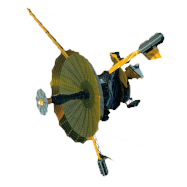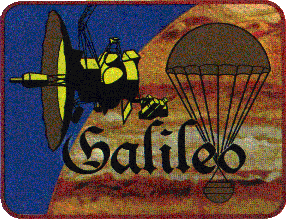Investigation of the Magnetosphere of Ganymede with Galileo's Energetic Particle Detector
Ph.D. dissertation by Shawn M. Stone, University of Kansas,
1999.
Copyright 1999 by Shawn M. Stone. Used with permission.
Chapter 8. Discussion and Conclusions
It is time to bring a seemingly daunting amount of information into perspective. This chapter will present a summary of the results from the G2 and G7 encounters (G7 is contained in Appendix B). First, the M2 magnetic field model is summarized in section 8.1. Also, the implications of this model for the plasma environment are discussed. In section 8.2, the null point interactions are discussed. In section 8.3, the absorption signatures from the G2 and G7 encounters are compared and contrasted for model M1 and model M2. In section 8.4, the scattering results are discussed for both the G2 and G7 encounter. Section 8.5 discusses the electric field results for these encounters. In section 8.6 conclusions are drawn and future work is contemplated.
- 8.1 The Model M2 Magnetic Field Model and Its Implications for the Plasma Environment Near Ganymede for G2 and G7
- 8.2 The Ion Null-Point Interactions During the Inbound Pass at G2
- 8.3 Correspondence of the Simulated Loss Cones and Anti-Loss Cones to the Observed Data for the G2 and G7 Encounters
- 8.4 Pitch Angle Scattering Results for G2 and G7
- 8.5 Corotational and Parallel Electric Field Implications
- 8.6 Conclusions and Proposal for Future Study
Return to dissertation table of contents page.
Return to main
Galileo Table of Contents Page.
Return to Fundamental
Technologies Home Page.
Updated 8/23/19, Cameron Crane
QUICK FACTS
Mission Duration: Galileo was planned to have a mission duration of around 8 years, but was kept in operation for 13 years, 11 months, and 3 days, until it was destroyed in a controlled impact with Jupiter on September 21, 2003.
Destination: Galileo's destination was Jupiter and its moons, which it orbitted for 7 years, 9 months, and 13 days.



